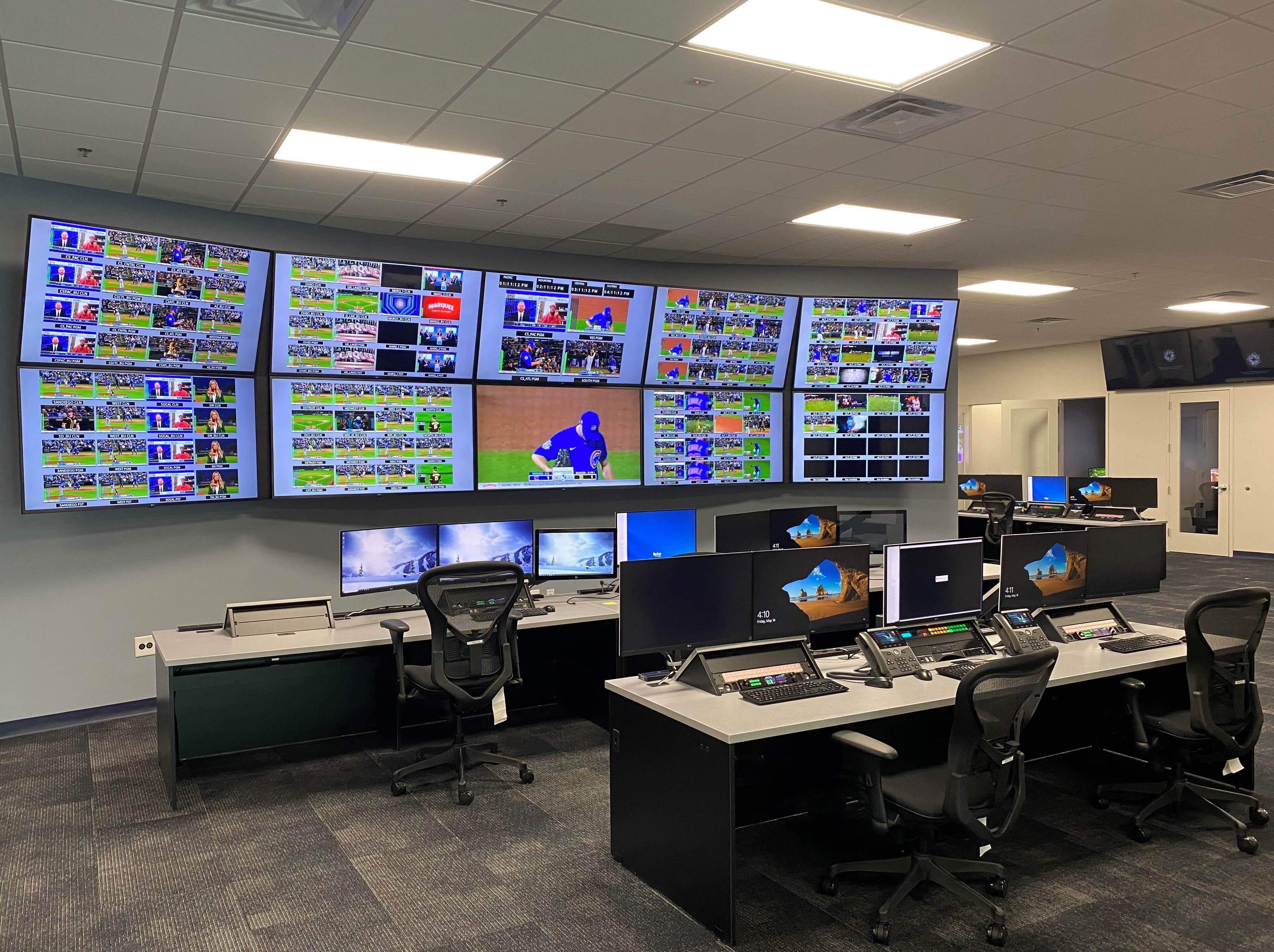New Sinclair RSN Ops Center Leverages ST 2110 IP Infrastructure, Cloud
The core infrastructure of the operations center relies on Imagine Communications solutions

ATLANTA—Sinclair Broadcast Group has expanded its sports production and delivery capabilities with the launch of a new 25,000-square-foot, SMPTE ST 2110 media operations center here dedicated to its regional sports networks (RSNs).
The operations center, which leverages cloud-hosted disaster recovery channels, also serves as a large-scale ST 2110 production facility for its Tennis Channel. Sinclair’s Tennis Channel features a cloud-based environment for pop-up live special events as well.
The new op center is built around Imagine Communications infrastructure and playout solutions.
“This transition cannot be a simple lift and shift of legacy systems; it is the opportunity to take a fresh look at the way a broadcaster operates,” says Don Roberts, VP of sports engineering and production systems at Sinclair. Meeting both business and technical requirements were driving factors in Sinclair’s transition to IP connectivity and software-defined architecture.
“We have to start from good user engagement, to understand what will change at each step,” says Roberts. “The transition to IP and the cloud is transformative. We can’t just flip a switch. We have to redefine how the business works. This is change management as much as technology.”
Sinclair has a history of advocating for the SMPTE ST 2110 family of standards and a long relationship collaborating with Imagine to develop IP playout and production systems, the broadcaster said.
Following its 2019 purchase of the regional sports networks from Fox/Disney, Sinclair developed a new playout strategy and committed to building an IP-based facility from the ground up to serve as a future-proof hub for the RSNs.
The professional video industry's #1 source for news, trends and product and tech information. Sign up below.
Sinclair partnered with Encompass to build the operations center, which leverages the Imagine Versio integrated playout platform, Selenio network processors and Magellan SDNO control system at its core.
Sinclair’s first step was to develop an on-premises solution for the RSNs. “We also developed options to put some functionality ― like the archive and disaster recovery playout ― into the cloud,” says Roberts. “This enables us to use the Atlanta facility as a stepping-stone, continually refining the workflows and business cases that will help us transition to a hybrid approach that balances capability and cost.”
Sinclair also was developing a platform for its Tennis Channel at the same time. With a master control center in Santa Monica, Calif., the Tennis Channel uses the Versio platform, on-premise for primary origination with Imagine’s ADC automation and as software instances hosted on the AWS cloud for pop-up special events under the control of the cloud-optimized Versio automation system.
“Tennis is live and unpredictable, so we need our playout capabilities to be agile and responsive,” says Roberts. “Software solutions like Versio give us that agility ― the ability to make a decision and have it on air virtually instantly. And because it can be hosted in the cloud, we simply spin it up at the beginning of each tournament and close the software when it ends.”
Imagine’s Selenio Network Processor (SNP) are central to the architecture at the Santa Monica center. Each 1RU SNP device hosts four independent, software-defined processing channels.
The SNPs at the Tennis Channel facility act as IP gateways and support format conversion, which allows the facility to be primarily 1080p, but accommodate 4K and HDR UHD when needed, which was used for the French Open tennis tournament from Roland Garros in Paris. The facility also uses the new SNP-MV multiviewer personality, allowing for tactical multiview displays to be established quickly wherever they are needed in the workflow.
Sinclair launched the new Tennis Channel ST 2110 infrastructure in December 2020 and went live to and from the cloud during coverage of the 2021 Miami Open in March, one of the first high-profile live sporting events played out from the cloud.
“Our plans moving forward are all about making production and delivery more efficient, to create a single ecosystem. Each of our RSNs has its own production facilities, and as they need a technology refresh, we will bring them into the ST 2110 world. We see Imagine as a key partner in that process: we work closely with them, we have honest exchanges about the way forward, and we are all learning as we go along. It’s a winning team,” says Roberts.
Phil Kurz is a contributing editor to TV Tech. He has written about TV and video technology for more than 30 years and served as editor of three leading industry magazines. He earned a Bachelor of Journalism and a Master’s Degree in Journalism from the University of Missouri-Columbia School of Journalism.

